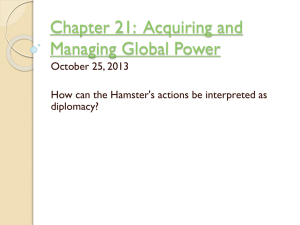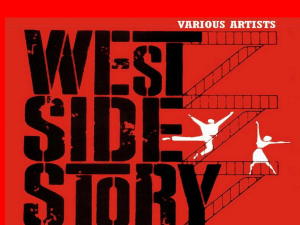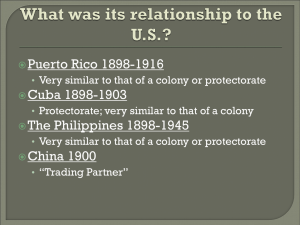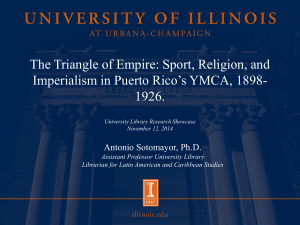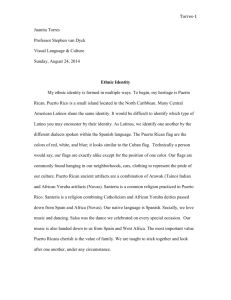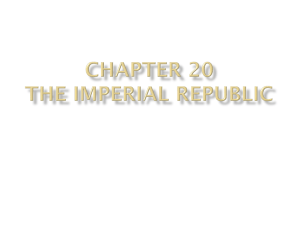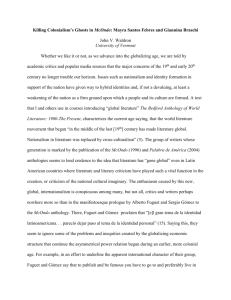Reading6.7Africans.Luiz
advertisement
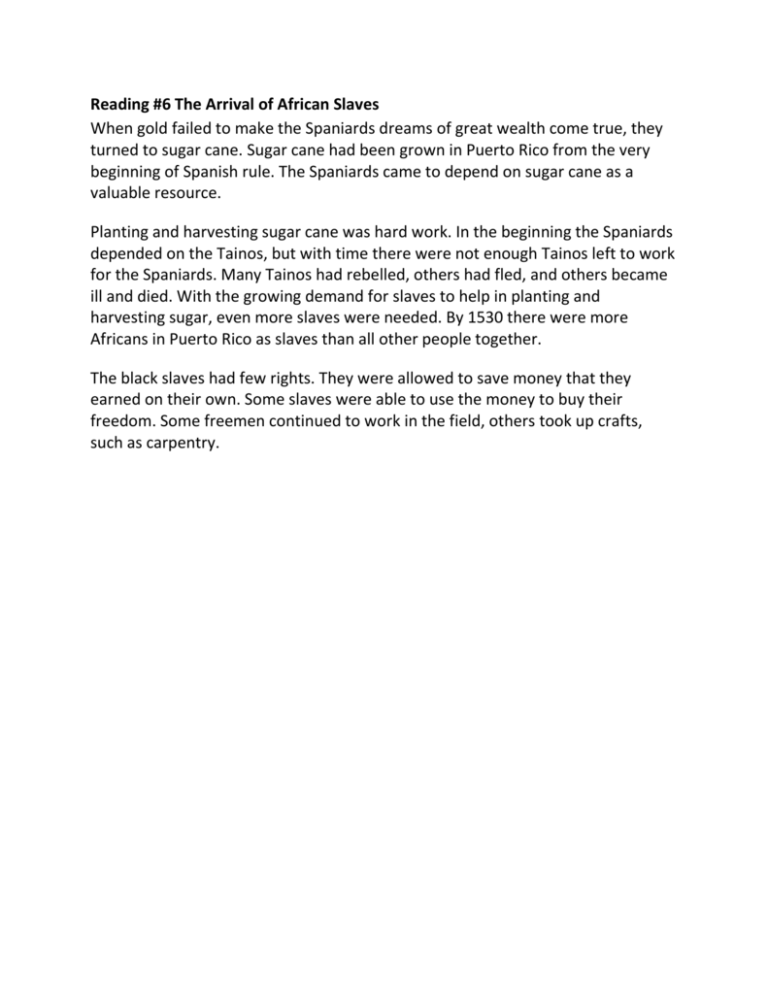
Reading #6 The Arrival of African Slaves When gold failed to make the Spaniards dreams of great wealth come true, they turned to sugar cane. Sugar cane had been grown in Puerto Rico from the very beginning of Spanish rule. The Spaniards came to depend on sugar cane as a valuable resource. Planting and harvesting sugar cane was hard work. In the beginning the Spaniards depended on the Tainos, but with time there were not enough Tainos left to work for the Spaniards. Many Tainos had rebelled, others had fled, and others became ill and died. With the growing demand for slaves to help in planting and harvesting sugar, even more slaves were needed. By 1530 there were more Africans in Puerto Rico as slaves than all other people together. The black slaves had few rights. They were allowed to save money that they earned on their own. Some slaves were able to use the money to buy their freedom. Some freemen continued to work in the field, others took up crafts, such as carpentry. Activities 1. Discuss the cultural impact: of the African cultural legacy on the Puerto Rican culture. Have students do research about distinguished Puerto Ricans who fought for the abolition of 2. slavery. Such as: Ramon Emerterio Betances, Segundo Ruiz Belvis, Francisco Mariano Quiones, and Jose J. Acosta. Obtain and play records in the classroom of Puerto Rican plena, la bomba, and other African 3. musical expression of Puerto Rico. Invite parents and community members to visit classes and request them to discuss themes 4. in Puerto Rican culture of African traditions. Reading #7 Luis Munoz Rivera On March 22, 1873, all slaves in Puerto Rico were declared free. Even though slavery was ended, no Puerto Rican was completely free. The island still belonged to Spain. The governor continued to be a Spaniard. The islanders had some voice in their own government, but the important laws were made in Spain. Luis Munoz Rivera was one of Puerto Rico’s leaders at the time. He was a native Puerto Rican, born in Barranquitas in 1859. He became a newspaper writer. In his writing he insisted that Puerto Rico should have autonomy. This meant that Puerto Rico would still be part of Spain, but would have the power to decide many of its problems. Puerto Rico would have its own legislature and could trade with other countries. In 1897 Spain granted Puerto Rico the kind of autonomy that Luis Munoz Rivera hoped for. He was named leader of the new government of the island. The new government began its work in February, 1898, but it didn’t last long. War broke out between Spain and the United States. By the end of 1898, Puerto Rico no longer belonged to Spain. The island was given to the United States. Once again Puerto Ricans were not allowed to govern themselves. Activities 1. Continue to develop Time Line, add 1809 - Spanish colonies invited to Spain’s legislature or Cortes 1812 - Constitution written 1814 - King of Spain throws out constitution 1868 - Grito de Lares revolution against Spanish rule 1898 - Spanish-American War. Puerto Rico ceded to United States 1900 - U.S. Congress established civil government for Puerto Rican’s to elect their own governor. 1917 - Puerto Ricans became citizens of the United States 1947 - Congress amended the Jones Act to permit Puerto Ricans to elect their own governor 1949 - Luis Munoz Marin elected first governor of Puerto Rico 1952 - Puerto Rico became a Commonwealth 2 Research and Study a. b. c. d e. f. g. Discuss Spain’s legislature or Cortes. Have students write a short essay on the Cortes. Discuss the Constitution of 1812 and the King of Spain’s decision to throw out the constitution. How did this affect the people of Puerto Rico? Have students write a short essay. Discuss the revolution against Spanish rule the Grito de Lares. Have students write a short essay on the revolution. Discuss the Spanish-American War. Have students write a short essay. Have students write reports on the Jones Act. Have students write a biography of Luis Munoz Marin. Discuss what commonwealth status means. Have students write a short essay on the Commonwealth of Puerto Rico.


